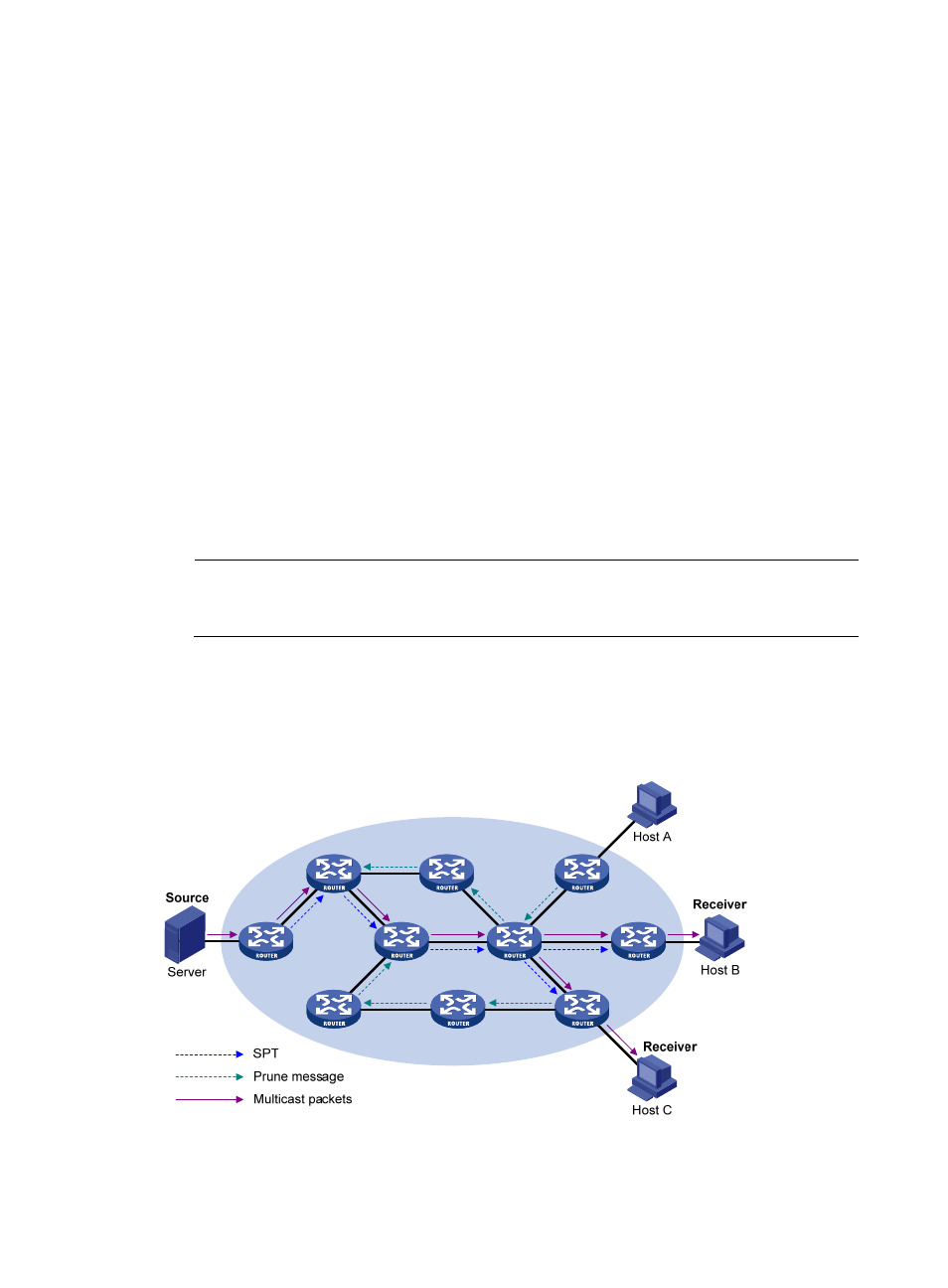Neighbor discovery, Spt building, Creating an rpf route – H3C Technologies H3C S12500-X Series Switches User Manual
Page 72

62
•
•
•
Neighbor discovery
In a PIM domain, each interface that runs PIM on a router periodically multicasts PIM hello messages to
all other PIM routers (identified by the address 224.0.0.13) on the local subnet to discover PIM neighbors,
maintain PIM neighboring relationship with other routers, and build and maintain SPTs.
SPT building
The process of building an SPT is the flood-and-prune process:
1.
In a PIM-DM domain, when the multicast source S sends multicast data to the multicast group G,
the multicast data is flooded throughout the domain. A router performs an RPF check for the
multicast data. If the RPF check succeeds, the router creates an (S, G) entry and forwards the data
to all downstream nodes in the network. In the flooding process, all the routers in the PIM-DM
domain create the (S, G) entry.
2.
The nodes without downstream receivers are pruned. A router that has no downstream receivers
sends a prune message to the upstream node to remove the interface that receives the prune
message from the (S, G) entry. In this way, the upstream stream node stops forwarding subsequent
packets addressed to that multicast group down to this node.
NOTE:
An (S, G) entry contains a multicast source address S, a multicast group address G, an outgoing
interface list, and an incoming interface.
A prune process is initiated by a leaf router. As shown in
, the router interface that does not
have any downstream receivers initiates a prune process by sending a prune message toward the
multicast source. This prune process goes on until only necessary branches are left in the PIM-DM domain,
and these necessary branches constitute an SPT.
Figure 23 SPT building
- H3C S9800 Series Switches H3C S5560 Series Switches H3C S5130 Series Switches H3C S5120 Series Switches H3C S12500 Series Switches H3C SR8800 H3C SR6600-X H3C SR6600 H3C WX6000 Series Access Controllers H3C WX5000 Series Access Controllers H3C WX3000 Series Unified Switches H3C LSWM1WCM10 Access Controller Module H3C LSWM1WCM20 Access Controller Module H3C LSQM1WCMB0 Access Controller Module H3C LSRM1WCM2A1 Access Controller Module H3C LSBM1WCM2A0 Access Controller Module
